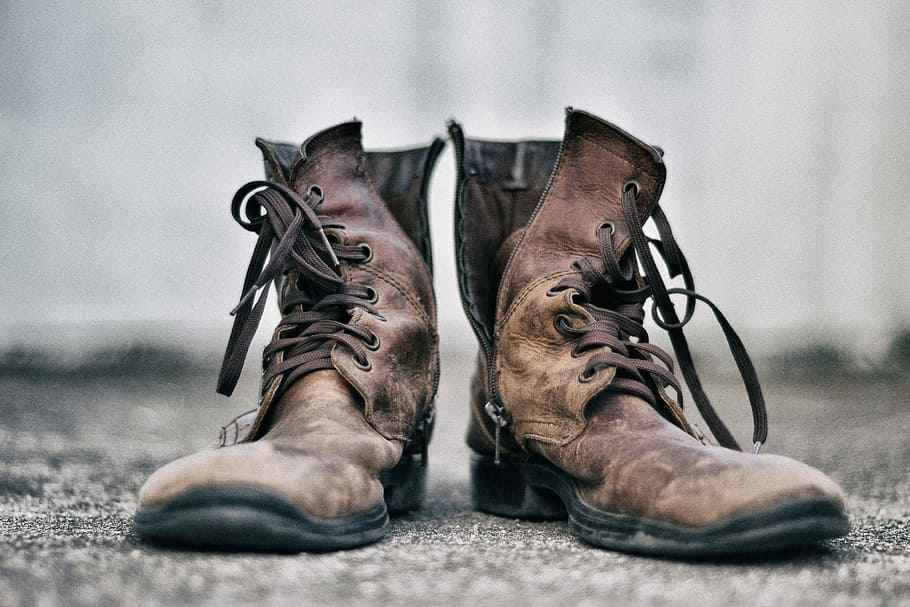
-Please read till the end!
To take care of waterproof leather boots, clean them regularly with a damp cloth and mild soap, avoid exposing them to extreme temperatures or direct sunlight, and use a leather protector spray. Waterproof leather boots are an excellent investment for anyone who spends a lot of time outdoors in wet conditions.
They are durable and can last for a long time if properly maintained. However, taking care of waterproof leather boots is crucial to ensure that they remain in good condition and continue to provide protection against the elements. In this article, we will provide you with some essential tips for taking care of your waterproof leather boots.
By following these tips, you will be able to extend the lifespan of your boots significantly.
Contents
Why Waterproofing Your Leather Boots Is Important
Protecting Your Leather Boots Against Water Damage
Your leather boots are an essential component of your wardrobe, and preserving them for an extended period is important. As such, taking care of them should start with the basic step of waterproofing.
The Importance Of Waterproofing Your Leather Boots
Leather is a porous material, and it is prone to damage from water and moisture. Waterproofing your leather boots is essential if you want to lengthen their lifespan and keep them in good shape.
How Water Damages Your Leather Boots
Water can seep into the leather material of your boots and cause a range of damages, from discoloration to shrinking, cracking, and peeling of the leather. This is the reason why you need to be extra careful with your leather boots, especially during rainy and winter seasons.
The Impact Of Water Damage On Your Investment
When you invest in a pair of high-quality leather boots, you expect them to last for a long time. However, if your boots get damaged due to water, then you may need to replace them within a short period. The cost of constantly replacing your boots can be high, and it can lead to financial strain.
Understanding The Different Types Of Leather
There are two main types of leather used for footwear: full-grain leather and top-grain leather.
Full-Grain Leather Vs. Top-Grain Leather
Full-grain leather is the highest quality leather type available, and it is made from the strongest part of the hide. It is durable, has natural grains, and tends to age beautifully over time. On the other hand, top-grain leather is the second highest quality leather type, but it undergoes an additional process that removes the topmost layer and sanding out any imperfections.
The Benefits And Drawbacks Of Each Type
Full-grain leather has natural oils and fats that make it more resistant to water penetration, thus better suited for waterproofing. Additionally, it is more durable and has a unique texture and patina that improves over time. However, it can be expensive.
Top-grain leather, on the other hand, is more affordable and has an even texture that some people may find more appealing, but it requires more maintenance.
How The Type Of Leather Affects Waterproofing
When waterproofing your leather boots, it is important to know the type of leather you are dealing with to select the appropriate waterproofing solution. Full-grain leather is more breathable and requires less maintenance, making it more suitable for waterproofing with wax-based products.
On the other hand, top-grain leather is more sensitive to staining and requires waterproofing with a light coating spray that does not clog the pores.
How To Take Care Of Waterproof Leather Boots?
Waterproof leather boots are important not only for outdoor recreational activities but also for several professional workspaces. They give superb protection in most conditions and are truly invaluable.
However, waterproof leather boots are vulnerable to damage if you do not care for them. Even though they are sturdy and protective, they need proper care and maintenance. Without it, you may soon find the leather cracked and suffering from creases. Taking care of leather boots is very important to extend their life and make them perform well for years.
1. Brush the dirty boots
The first thing that you should do every few days after using the boots is to clean the leather. Keeping the shoes clean is important to maintain their quality and longevity.
- Remove the laces before caring for the shoes as they may get in the way.
- You can insert the laces again when the boots are clean, treated, and dry.
- Brush off loose dirt and mud from the boot that may have accumulated on its outer surface.
- Knock the boots gently against each other to remove mud and soil stuck to the outsole of the shoes. It helps to dislodge dried particles.
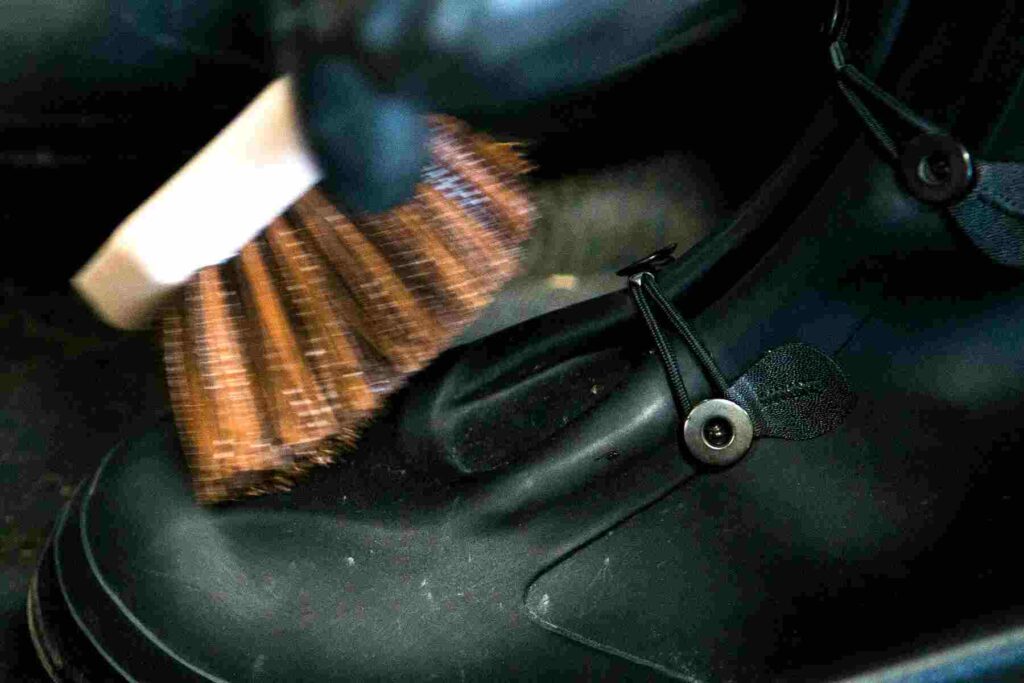
2. Clean the boots
The next most important step is to clean the boots. Remember that these are not rubber slippers, sandals, or flip-flops that you can dip in water and put to dry. Leather boots need special cleaning for proper maintenance.
- You should take care not to use any harsh chemicals or detergents on the leather surface as it may destroy the texture. Damage to the leather can cause it to crack.
- You can use a solution made of water and white vinegar and clean the leather boots by dabbing a cloth with that solution.
- Alternatively, you can also use a cleaning gel made for leather shoes. These are directly available in spray cans, and you just need to follow the written instructions. Spray the cleaning gel on the boots and let it rest for some time. Then wipe the surface with a rag to clean off all the dirt.
- You can give them a final wipe with a rag dipped in water to leave the leather surface absolutely clean.
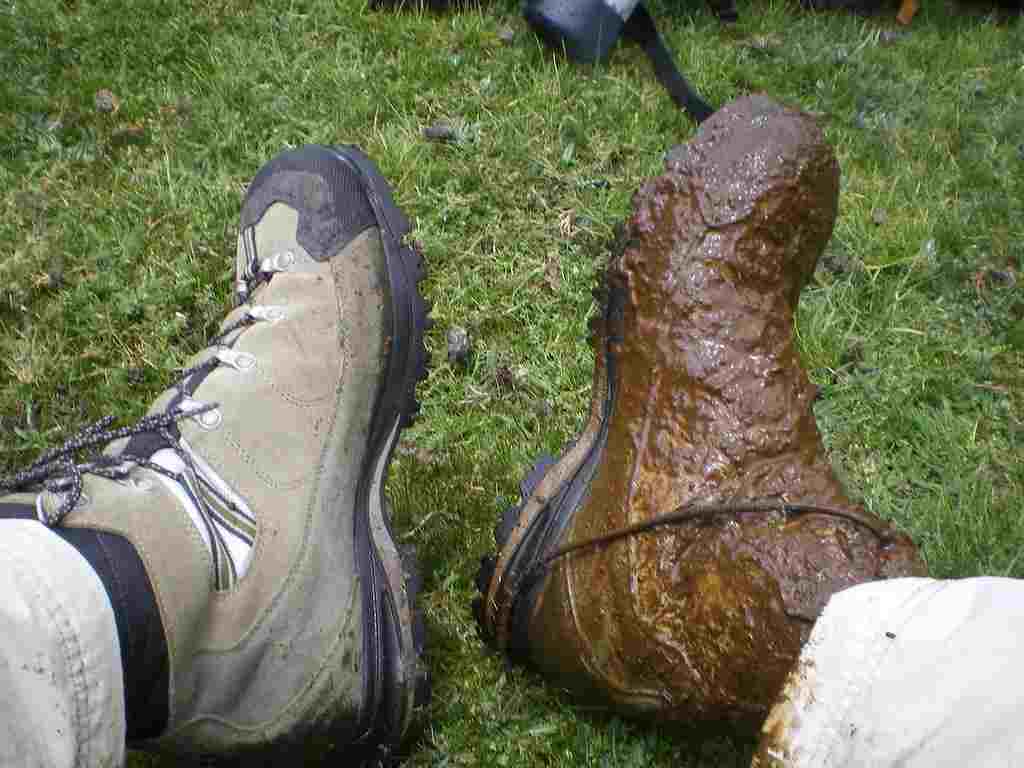
3. Leave the shoes to dry
Once you have cleaned the boots, it is time to dry them properly. Wearing wet boots can be very uncomfortable. Putting away even partly wet boots in the shoe rack can damage the leather and lead to mold formation.
- After cleaning the boots give them at least a day to dry.
- Hang the boots from a hook in dry weather. If it is sunny outside, you can place the boots outdoors too. Hanging them helps to dry all the corners of the shoes.
- Stuff newspaper inside the hollow of the boots to absorb the moisture inside. It is the best natural way to help leather boots to dry faster.
- Never use a blow dryer to speed up the drying process as it cracks the leather badly.
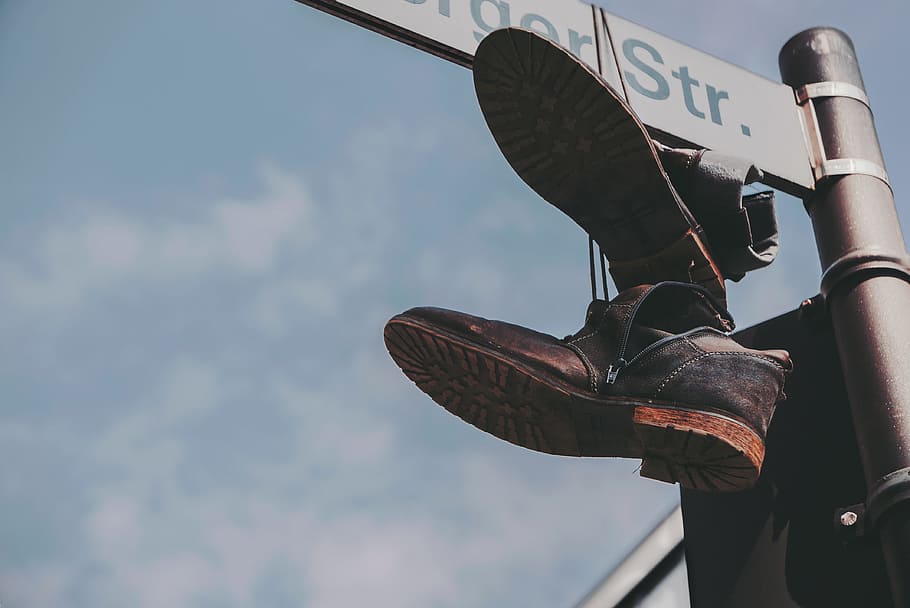
4. Use conditioner and waterproof wax on the leather
Finally, when you have completed cleaning and drying the boots, it is time to condition them. This helps to keep the boots soft. Without proper conditioning, the leather can become dry over time.
- Use leather conditioning oil or cream and apply a small portion to the leather.
- Hold the shoe and gently rub the conditioner into the leather, spreading it evenly all over.
- You should apply waterproofing wax on the leather at least once a year to protect the leather boots. Dip a piece of cloth in the waterproofing wax and spread it evenly all over the surface. You can also use a waterproofing spray.
Your leather boots are precious if they fit you well and give you superb comfort and protection. Therefore, caring for them will make them keep you happy for a long time. A little care really goes a long way.
Tips For Waterproofing Your Leather Boots
Taking care of waterproof leather boots is essential if you want to maximize their lifespan and keep your feet dry in wet conditions. If you’re not sure how to do it, don’t panic! We’ve got you covered with some tips for keeping your waterproof leather boots in top shape.
Choosing The Right Waterproofing Products
Before you start waterproofing your leather boots, it’s crucial to select the right type of product. Here are some of the most common options:
- Wax-based: These products offer excellent water resistance and provide a shiny finish. However, they can darken the leather and make it stiffer.
- Silicone-based: Silicone is more breathable than wax, which means your boots will remain more flexible. However, they only offer temporary protection.
- Spray-on: These products offer good water resistance and are easy to apply. However, the protection might not be long-lasting.
How To Select The Right Product For Your Boots
When choosing a waterproofing product, you should consider the following:
- The level of protection you need: Are you going to wear your boots in heavy rain or just light drizzle?
- The type of leather: Different products work better on some types of leather, so be sure to check the label.
- The application process: Some products require more effort than others, so choose one that fits your lifestyle.
Preparation Before Waterproofing
Before applying any waterproofing products, you should prepare your boots first. Here are some of the things you need to do:
- Cleaning and conditioning your leather boots
To ensure that the waterproofing product evenly coats your boots, you should first clean them with a damp cloth and a mild soap solution. Then, apply a leather conditioner to keep the leather supple.
- Removing any existing waterproofing products
If your boots already have a waterproofing product on them, you should remove it using a leather cleaner before applying a new one.
Applying Waterproofing Products
Once you’ve prepared your boots, it’s time to apply the waterproofing product. Here is a step-by-step process:
- Shake the product well before use.
- Apply the product evenly onto your boots using a soft cloth or sponge.
- Leave the boots to dry naturally for at least 24 hours in a well-ventilated area.
- Repeat the process if necessary.
Additional Tips For Safe And Effective Waterproofing
To ensure that your boots remain dry and resilient for long, you can follow these tips:
- How often to waterproof your boots
You should waterproof your boots every six months, even if you don’t use them frequently. If you use them daily or in wet conditions, you might need to do it more often.
- What to do if water does get onto your boots
If water does get onto your boots, make sure to wipe them off with a dry cloth as soon as possible. Then, let them air-dry naturally in a cool and dry place.
By following these tips, you can keep your waterproof leather boots in excellent condition for years to come!
Maintaining Your Waterproofed Leather Boots
Your waterproof leather boots are essential to protecting your feet during any weather condition. But like any footwear, they require proper care and maintenance to maintain their waterproofing. Here are some best practices for maintaining your waterproofed leather boots.
Storage And Handling
Proper storage of your boots is crucial to keeping their waterproofing intact. Here are some tips to keep in mind:
- Store your boots in a dry, well-ventilated area, away from any direct heat sources.
- Stuff your boots with newspaper or shoe trees to help them keep their shape.
- Avoid storing your boots in direct sunlight or extreme temperatures, which can damage the leather.
When it comes to handling your boots:
- Use a shoehorn to avoid damaging the heels as you slide your feet into the boots.
- Don’t pull up the boots by their laces. Use your hands to pull them up instead.
- Avoid wearing the boots day in and day out. Alternate between two to three pairs, giving each pair a break to air out.
By following these best practices for storage and handling, you can significantly extend the life of your waterproof leather boots.
Cleaning And Conditioning
Keeping your boots clean and conditioned is another critical step in maintaining their waterproofing and prolonging their life. Here are some best practices and recommended products for cleaning and conditioning your waterproofed boots:
- Use a soft-bristled brush to remove any dirt and debris from the surface of the boots.
- Dampen a cloth with water and gently wipe the boots clean. Avoid using any harsh chemicals or cleaners that can damage the leather.
- Allow the boots to air dry completely before storing them.
- Once the boots are dry, apply a leather conditioner to keep them soft and supple. Use a product specifically designed for waterproofed leather boots, such as nikwax leather conditioner.
- Apply a waterproofing treatment to the surface of the boots. Look for a product that is silicone-based, like kiwi camp dry heavy duty water repellent.
By regularly cleaning and conditioning your boots, you can help maintain their waterproofing and ensure they stay in excellent condition for years to come.
Proper care and maintenance of your waterproof leather boots are essential to keep them in optimal condition. With some simple steps and recommended products, you can help prolong the life of your boots and enjoy dry, comfortable feet no matter what the weather brings.
Common Mistakes To Avoid
Taking care of waterproof leather boots is crucial if you want them to last long. Waterproof leather boots are known for their high quality and durability, but if not well-taken care of, they can wear out or become damaged quickly.
Here are some common mistakes to avoid when taking care of your waterproof leather boots:
Using The Wrong Products Or Techniques
- Use appropriate products and techniques for your boots. Avoid using harsh chemicals or soap-based products that can damage the leather or interfere with their waterproofing properties.
- Know the type of leather and its properties before using any product. Different types of leather require different products for maintenance.
- Test any new product on a small, inconspicuous area of the boot before applying it generally. This helps you avoid damaging the boot.
Not Waterproofing Regularly
- Waterproofing is essential for maintaining the properties of your waterproof leather boots.
- Regularly apply waterproofing products to prevent water damage from rain, snow, or other forms of moisture.
- Reapply the waterproofing product if your boots are frequently exposed to wet conditions, or if you notice signs of wear.
Not Cleaning And Conditioning Properly
- Dirt, salt, or sweat can cause damage to the leather if left uncared for. Cleaning your boots is essential in ensuring your boots look good and remain in shape.
- Use a soft brush or a damp cloth to wipe off dirt and other debris from the boots. Avoid using abrasive materials.
- Leather conditioning helps to keep your boots looking fresh and soft. Conditioning works to soften the leather and restore its natural oils.
By avoiding these common mistakes when caring for your waterproof leather boots, you can keep them looking in top shape while maintaining their quality and durability. Regular cleaning, conditioning, and waterproofing go a long way in ensuring they don’t wear out quickly.
Frequently Asked Questions For How To Take Care Of Waterproof Leather Boots?
How Do I Clean My Waterproof Leather Boots?
First, remove any dirt or debris with a soft bristle brush. Then, wipe them down with a damp cloth. Use a leather cleaner specifically made for waterproof leather and apply with a soft cloth. Allow them to air dry.
How Do I Maintain The Waterproofing Of My Leather Boots?
Clean your boots regularly using products specifically made for waterproof leather. Apply a waterproofing spray or wax after cleaning, focusing on the seams. Reapply the waterproofing treatment as needed.
Can I Wear Waterproof Leather Boots In The Rain?
Yes, waterproof leather boots are designed to keep your feet dry in wet conditions. However, prolonged exposure to water or immersion in water can damage the waterproofing and the leather itself.
How Can I Remove Stubborn Stains From My Leather Boots?
Mix equal parts lemon juice and cream of tartar into a paste. Apply the paste to the stain and let it sit for 30 minutes. Wipe off the paste with a damp cloth and apply leather conditioner to the area.
Should I Store My Waterproof Leather Boots Differently Than Regular Leather Boots?
No, you should store your waterproof leather boots the same way you would regular leather boots. Keep them in a cool, dry place away from direct sunlight and extreme temperatures. Stuff them with newspaper to help them keep their shape.
Conclusion
Proper care and maintenance of your waterproof leather boots can definitely extend their lifespan significantly. Regular cleaning, conditioning, and storage in a dry and well-ventilated place can prevent dampness, mold, and odors that can ruin your favorite pair of boots.
Besides, using specialized products like leather cleaners, conditioners, and waterproofing sprays can keep your boots looking and performing their best. Remember, prevention is always better than cure, and investing a little time in taking care of your boots can save you from the costly replacement of a worn-out or damaged pair.
So, follow the tips and techniques we’ve provided in this post and show some love to your waterproof leather boots, and they will keep your feet dry, comfortable, and stylish for years to come. Happy exploring the great outdoors with your trusty boots.
Read also: Best Shoes For Warehouse Work
Read also: How To Condition Leather Boots

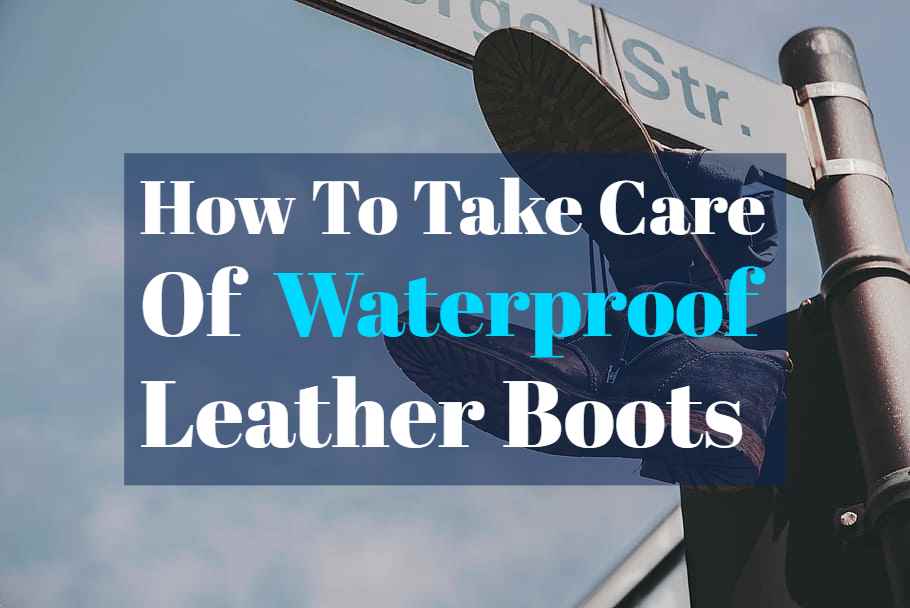

7 thoughts on “[4 Steps] How To Take Care Of Waterproof Leather Boots?”